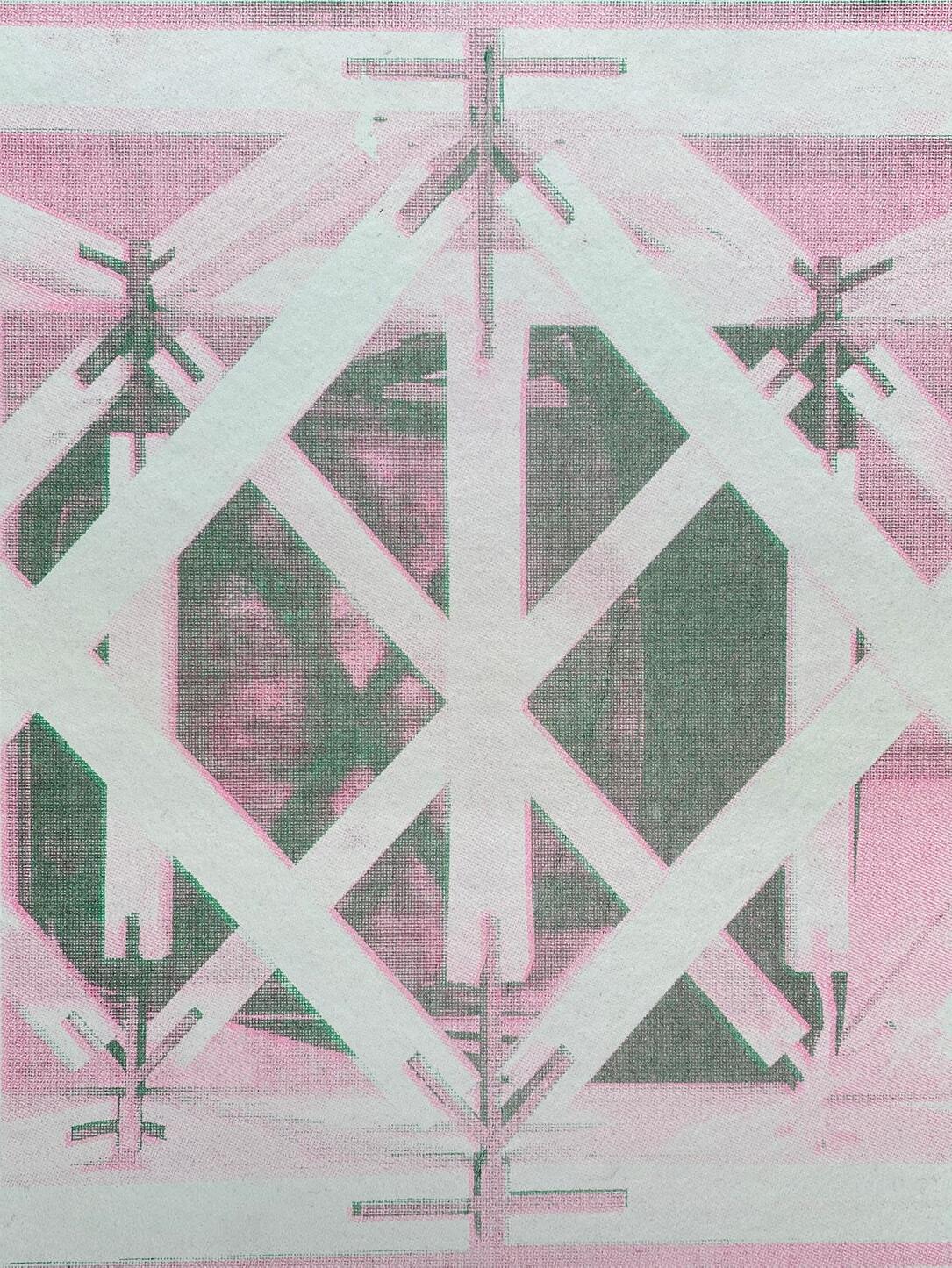Risograph is a printing method originated in the ‘80s, which was commonly used for printing bible or single-color flyers, its ability was associated with quantity and speed to print rapidly.
But for this thesis, riso is about slowness. To start printing, not only to turn on the power button but you also have to “wake up”. It’s an analog printing by working with color separation, density experiments and halftone formation. The fascination of risograph is its texture created through the overlapping of color pigments, resulting in a captivating and unpredictable outcome.
On the riso printer, you can only print one color at a time, to switch the color, you are taking out a 20lbs drum for another 20lbs drum. In addition, a master(stencil) has to be made before printing, any changes require another scan to make another stencil.
It’s all about experience, the excess amount of repetition to comprehend its nature and eventually learn to work with the colors, take on our own trial-and-error process yet produce something, not quite there.




Riso also helps us rethink the formula of queerness, which is, “to interrogate how normative culture produces desire, to expose the constructedness of that desire; and to expand the possibilities of desire through strategic acts of critique and reformulation.” Here, we are looking at the question “what is the dominant model of that desire?”
In Architecture, the prevalence of iconicity, the production of labor, even all-nighters. These are the desires that we’ve been taught to have, we work so hard so we can control everything. Working through countless iterations of models, refining every drawing for the “perfect line weights”, reworking every rendering with color tweaked and figure staged. A managerial control over behavior and self-identification. But what if we work on something that cannot be controlled? Work with overprinting, registration inaccuracy and uneven performance?
This accordion book of the truss mainly works with pink and green, but by working through the misregistration of the riso printer, it’s an attempt to disrupt our drive to generate meaning through dichotomies, question vs answer, masculine vs feminine…etc. These seemingly opposites are actually mutually constitutive. Just because one color prevailed over the other doesn’t mean that either is stable or self-defined. Straightness exists only by continually marginalizing queerness for instance.






































